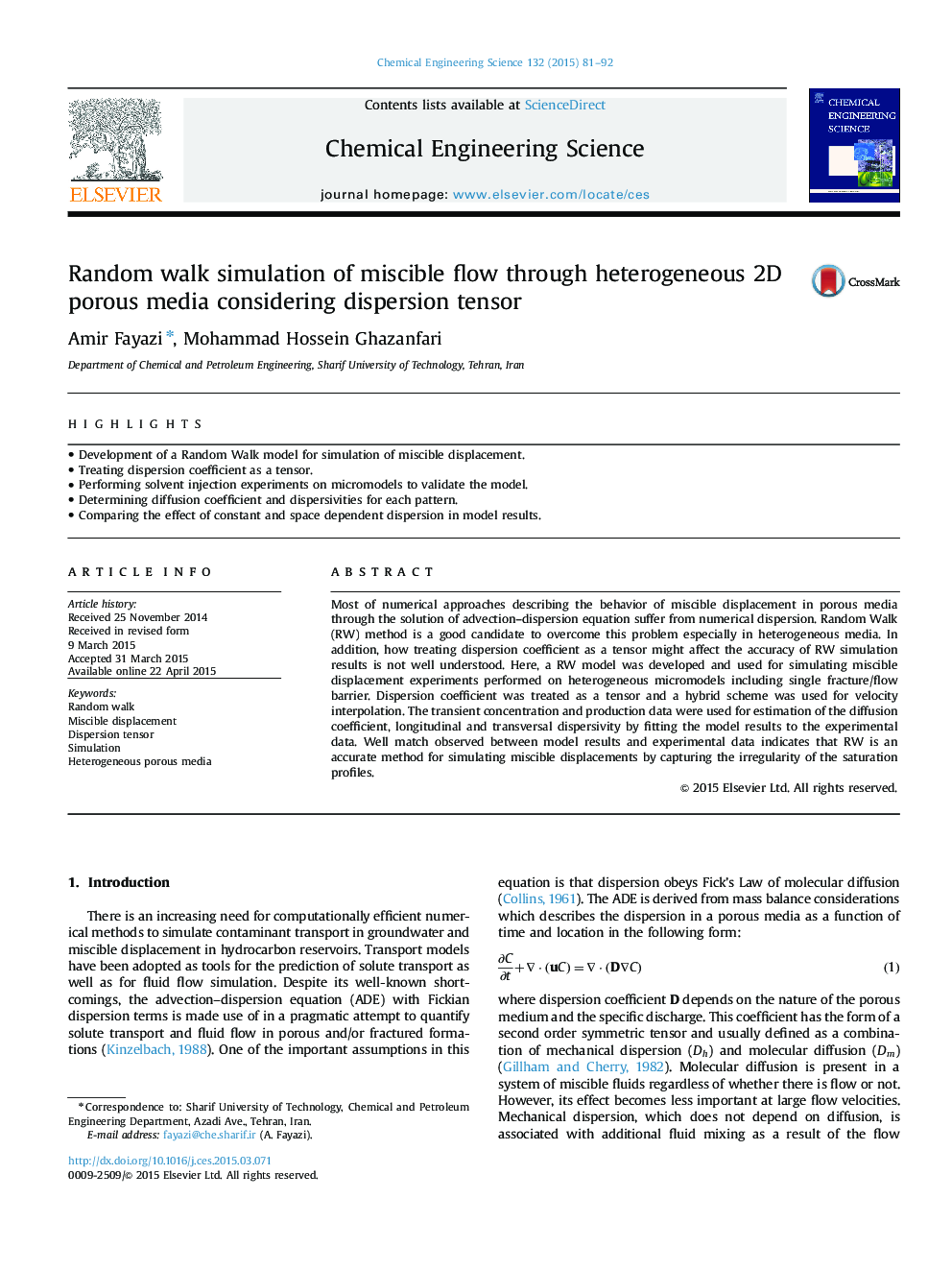| Article ID | Journal | Published Year | Pages | File Type |
|---|---|---|---|---|
| 154665 | Chemical Engineering Science | 2015 | 12 Pages |
•Development of a Random Walk model for simulation of miscible displacement.•Treating dispersion coefficient as a tensor.•Performing solvent injection experiments on micromodels to validate the model.•Determining diffusion coefficient and dispersivities for each pattern.•Comparing the effect of constant and space dependent dispersion in model results.
Most of numerical approaches describing the behavior of miscible displacement in porous media through the solution of advection–dispersion equation suffer from numerical dispersion. Random Walk (RW) method is a good candidate to overcome this problem especially in heterogeneous media. In addition, how treating dispersion coefficient as a tensor might affect the accuracy of RW simulation results is not well understood. Here, a RW model was developed and used for simulating miscible displacement experiments performed on heterogeneous micromodels including single fracture/flow barrier. Dispersion coefficient was treated as a tensor and a hybrid scheme was used for velocity interpolation. The transient concentration and production data were used for estimation of the diffusion coefficient, longitudinal and transversal dispersivity by fitting the model results to the experimental data. Well match observed between model results and experimental data indicates that RW is an accurate method for simulating miscible displacements by capturing the irregularity of the saturation profiles.
